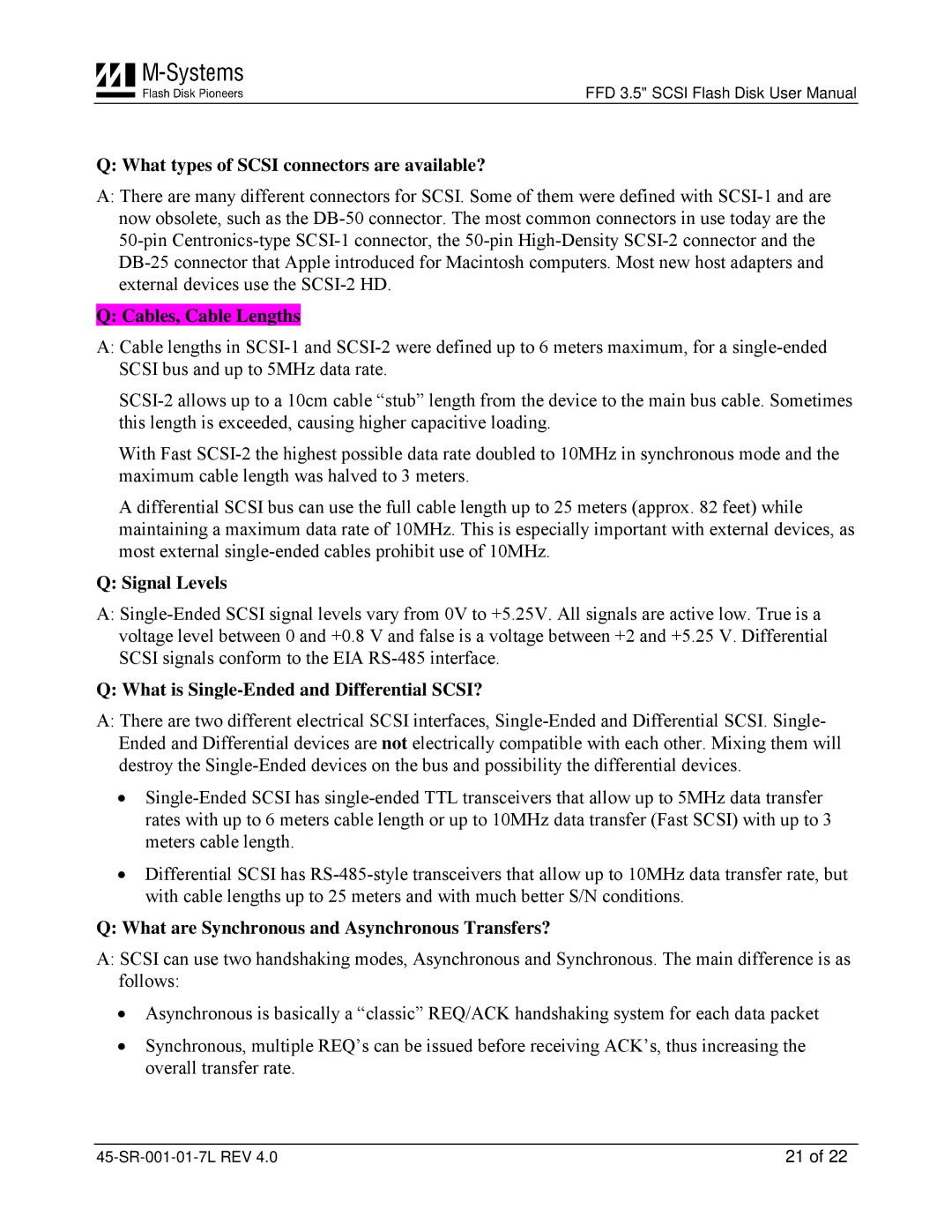FFD 3.5" SCSI Flash Disk User Manual
Q: What types of SCSI connectors are available?
A:There are many different connectors for SCSI. Some of them were defined with SCSI-1 and are now obsolete, such as the DB-50 connector. The most common connectors in use today are the 50-pin Centronics-type SCSI-1 connector, the 50-pin High-Density SCSI-2 connector and the DB-25 connector that Apple introduced for Macintosh computers. Most new host adapters and external devices use the SCSI-2 HD.
Q: Cables, Cable Lengths
A:Cable lengths in SCSI-1 and SCSI-2 were defined up to 6 meters maximum, for a single-ended SCSI bus and up to 5MHz data rate.
SCSI-2 allows up to a 10cm cable “stub” length from the device to the main bus cable. Sometimes this length is exceeded, causing higher capacitive loading.
With Fast SCSI-2 the highest possible data rate doubled to 10MHz in synchronous mode and the maximum cable length was halved to 3 meters.
A differential SCSI bus can use the full cable length up to 25 meters (approx. 82 feet) while maintaining a maximum data rate of 10MHz. This is especially important with external devices, as most external single-ended cables prohibit use of 10MHz.
Q: Signal Levels
A:Single-Ended SCSI signal levels vary from 0V to +5.25V. All signals are active low. True is a voltage level between 0 and +0.8 V and false is a voltage between +2 and +5.25 V. Differential SCSI signals conform to the EIA RS-485 interface.
Q: What is Single-Ended and Differential SCSI?
A:There are two different electrical SCSI interfaces, Single-Ended and Differential SCSI. Single- Ended and Differential devices are not electrically compatible with each other. Mixing them will destroy the Single-Ended devices on the bus and possibility the differential devices.
•Single-Ended SCSI has single-ended TTL transceivers that allow up to 5MHz data transfer rates with up to 6 meters cable length or up to 10MHz data transfer (Fast SCSI) with up to 3 meters cable length.
•Differential SCSI has RS-485-style transceivers that allow up to 10MHz data transfer rate, but with cable lengths up to 25 meters and with much better S/N conditions.
Q: What are Synchronous and Asynchronous Transfers?
A:SCSI can use two handshaking modes, Asynchronous and Synchronous. The main difference is as follows:
•Asynchronous is basically a “classic” REQ/ACK handshaking system for each data packet
•Synchronous, multiple REQ’s can be issued before receiving ACK’s, thus increasing the overall transfer rate.
45-SR-001-01-7L REV 4.0 | 21 of 22 |

